How to Find and Remove Rat Burrows
By:
Updated:


Rats are a common problem in New York City. Because they nest in underground burrows, it’s difficult for property owners to locate and exterminate them.
Finding Rat Burrows
In the wild, Norway rats (Rattus norvegicus) are social creatures that live in colonies with upwards of 150 individuals.1 Within a colony, rats might live in many small, independent burrows or build large, jointly-excavated burrow systems with interconnected tunnels and chambers. In urban areas, these rats typically live in small independent burrows that house a single family unit consisting of one male, one female, and up to a dozen juveniles.2
When assessing exterior rat issues in a neighborhood or on someone’s property, one of the first things we look for are active burrow holes. This helps us determine where the rats are coming from and if the infestation is minor, moderate, or severe. From there, we can determine the scope of work required to successfully exterminate the colony.
What Do Rat Burrows Look Like?
On the surface, a rat burrow appears as a small hole in the ground, usually about 2–3 inches across. A single burrow typically has at least two openings:
- Main entrance: This is usually the largest hole, located in an area clear of debris or vegetation.
- Exit holes: These are smaller and serve as emergency escape routes
As the rat population grows, they will dig additional tunnels and entry points, expanding the network of burrows.
Burrow Depth and Size
Beneath the surface, rat burrows are typically between 12 and 18 inches deep. However, if a burrow is located near a building’s foundation, it can extend as deep as 4 feet, potentially allowing the rats to tunnel into the building.
Signs of Active and Inactive Burrows
- Active burrows have smooth, well-worn entrances that are clear of debris and vegetation. Signs of freshly dug dirt, rat droppings, and visible runways (worn-down paths or greasy track marks) indicate active rat activity.
- Inactive burrows are often covered in leaves, cobwebs, or other debris, suggesting they’ve been abandoned. Even if a burrow is inactive, it should still be sealed to prevent new rats from moving in.
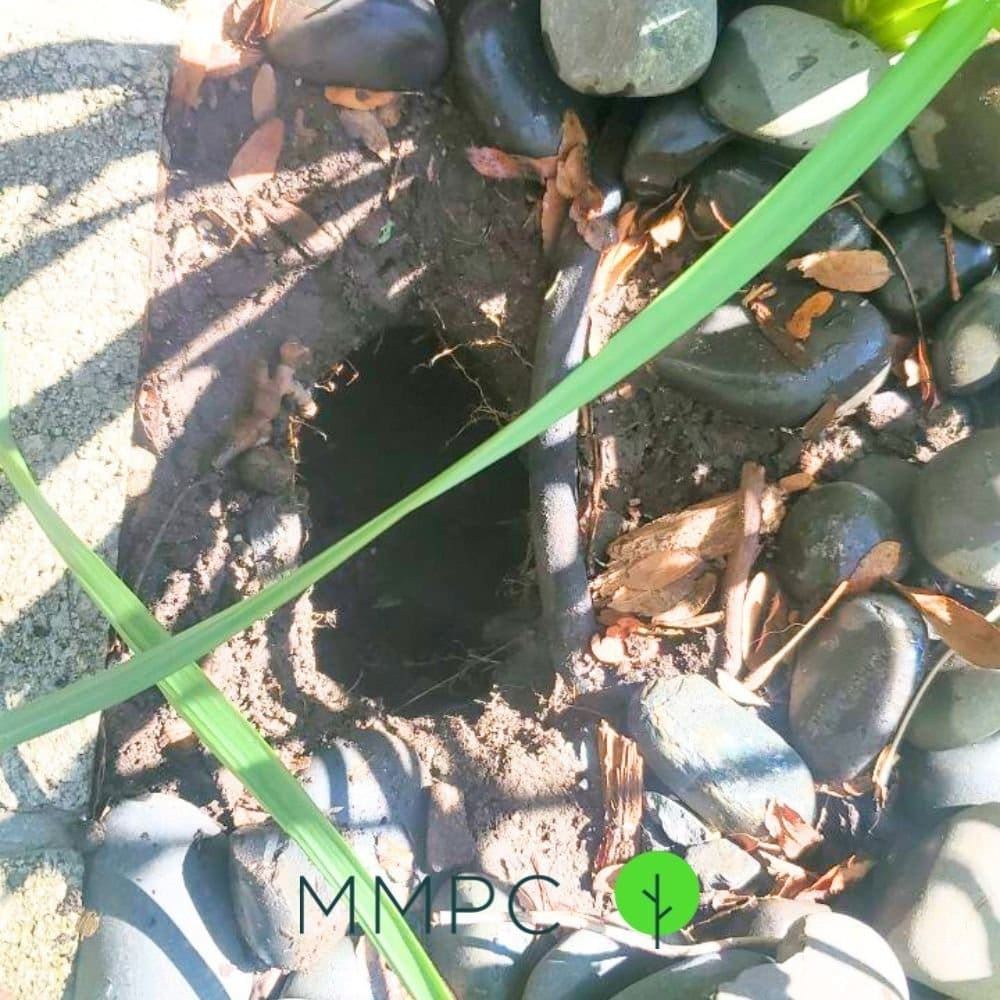
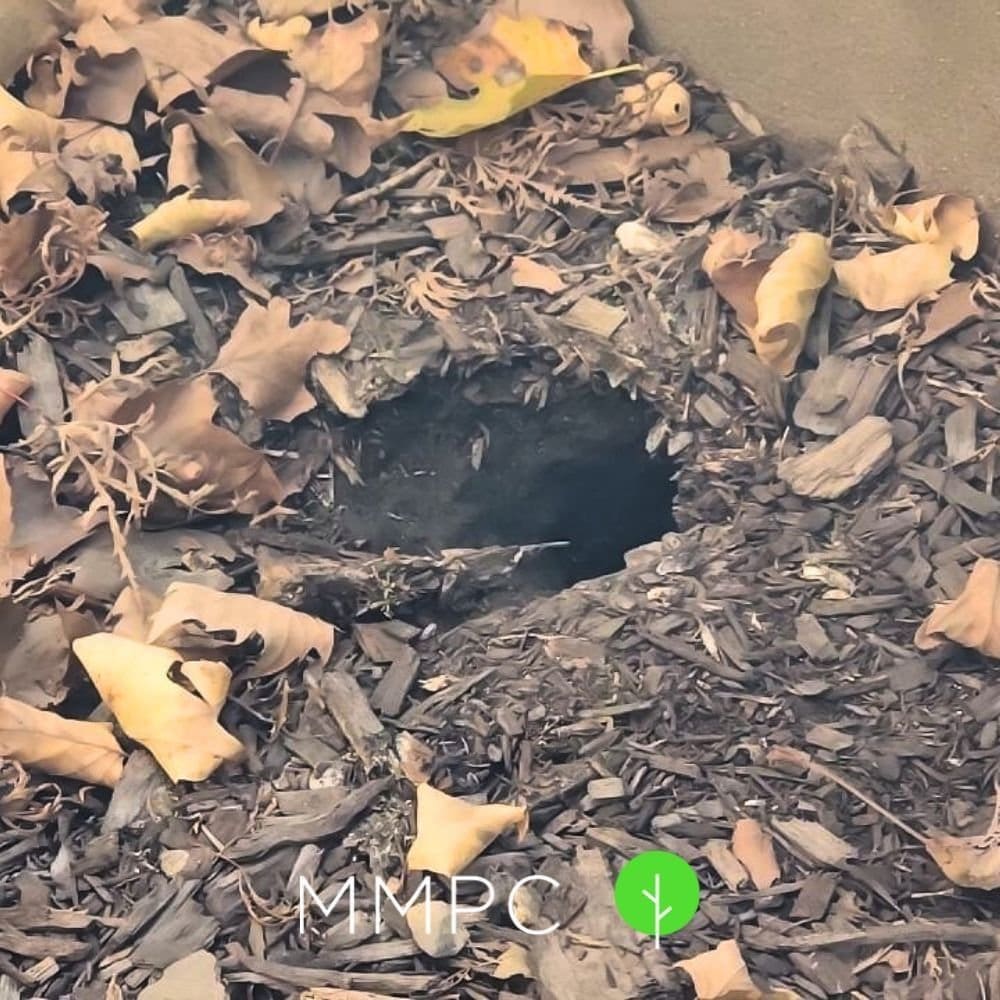
Where Do Rats Burrow?
Rats prefer to burrow in areas with soil that reaches at least a foot deep. Common places to find burrows include yards, gardens, tree beds, large planters, and empty lots. Their entrance and exit holes are often hidden under the cover of plants, bushes, and shrubbery.
Within an infested area, burrows are more likely to be found along walls, buildings, and other structures. Rats tend to stick close to these types of vertical surfaces due to an innate predator avoidance behavior known as thigmotaxis, or “wall-hugging.”
Another tip for finding burrows is to center the search around conditions that support rats, particularly sources of food (garbage cans, dumpsters, and trash piles). Norway rats have a home range of 50–100 feet, so you can typically locate their burrows by searching within a 100-foot radius of garbage containment areas.
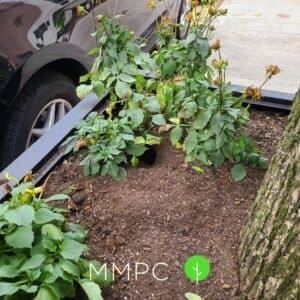
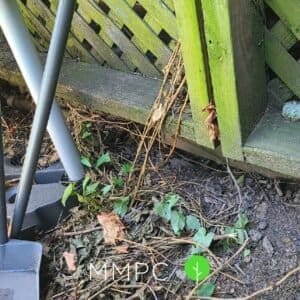

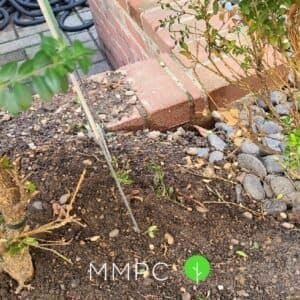
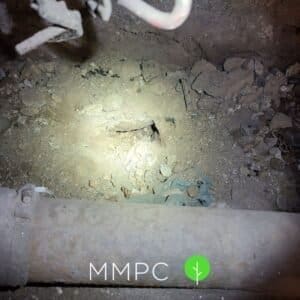
How to Get Rid of Rat Burrows
1. Clean Up
The first step in eliminating rat burrows is to address the conditions that attracted the rats in the first place:
- Declutter: Remove large items or debris that provide ground cover for rats.
- Trim vegetation: Keep bushes and overgrown areas near buildings and sidewalks well-trimmed.
- Secure compost: Store compost in rodent-resistant bins with tightly fitted lids.
- Sanitize: Clean up any rat droppings or greasy track marks, and wash affected areas with a mild bleach solution (1 part bleach to 10 parts water).
- Manage waste: Eliminate potential food sources by storing trash in metal-lidded cans and only placing it on the curb during collection days.
- Collaborate with neighbors: Work with your neighbors to ensure a thorough cleanup, as rats may burrow in one area while feeding in another.
2. Flush Active Burrows
If the burrow appears active, it’s recommended to flush the rats out before sealing it. This forces any rats inside to abandon the burrow, preventing them from digging their way back out or creating new entrances. If you decide to handle this yourself, we recommend using a long garden hose to flush the burrow with water:
- Safety first: Wear gloves and boots to protect yourself from potential contact with rats or contaminated soil.
- Clear the area: Remove any debris or objects that could obstruct the rats’ escape route, giving them a clear path to flee.
- Insert the hose: Place the end of the garden hose into the burrow entrance, ensuring it fits snugly to minimize water leakage.
- Move away: Stand at a distance from the entrance to allow rats to escape without feeling cornered.
- Turn on the water: Gradually fill the burrow with water until the entrance hole is covered. Monitor the flow and turn off the water once filled to avoid excessive flooding.
- Wait: Keep an eye out for escaping rats and be patient, as they may not emerge immediately.
Important: Avoid using dry ice, poison, or bleach in burrows, as these methods require safe and proper handling and should be left to trained professionals.
3. Close and Fill
Once the burrow is flushed, seal the entrances to stop rats from returning:
- Inactive burrows: Fill the hole with dirt, then stomp or tamp it down with a shovel to compact the soil. Check back in a few days to see if rats have re-excavated the burrow, which would indicate it is still active.
- Active burrows: Stuff the entrances with steel wool to prevent the rats from re-entering. Ensure the steel wool is tightly packed to discourage rats from chewing through it. Afterward, fill the hole with soil and compact it with a shovel.
- Special cases: If a burrow is located in a public tree bed, collapse the burrow or fill it with landscaping pebbles, being careful not to damage the tree roots. Avoid using pavers, concrete, or asphalt unless approved by NYC Parks.
4. Exclusion
After closing existing burrows, take these exclusion measures to prevent rats from digging new ones:
- Install barriers: Use sturdy wire mesh or chicken wire to block access to your garden and compost bins.
- Bury wire mesh: Place wire landscaping mesh about ½ inch below the soil around plants to prevent rats from digging.
- Seal cracks: Fill small holes and cracks in sidewalks or curbs with caulk and roofing cement. For larger gaps, use expanding foam, followed by steel or copper mesh, before sealing.
Getting Professional Help
If you are facing a severe or persistent rat infestation, property damage, health concerns, or burrows in difficult-to-reach areas, it’s best to contact a professional pest control company. At MMPC, our technicians use advanced methods to exterminate rats and remove burrows without damaging your property:
- Carbon Monoxide: We use a machine called BurrowRx to pump carbon monoxide into active rat burrows. This colorless and odorless gas reduces oxygen supply to the tissues, leading to hypoxia. A smoke oil tracer makes the gas visible, allowing us to locate additional entry and exit holes where gas escapes. This method is effective and humane, with a 100% elimination rate.
- Bait Stations: Tamper-resistant boxes with poisoned bait are placed near active burrows. The poison disrupts blood clotting in rats, causing them to succumb from internal bleeding after several days.
If you are facing an outdoor rat infestation in New York City or the surrounding areas, talk to one of our experts today to learn more about professional rat control services.

About the Author
References
- DAVIS D. E. (1953). The characteristics of rat populations. The Quarterly review of biology, 28(4), 373–401. https://doi.org/10.1086/399860 ↩︎
- Corrigan, R. M. (2007, February 26). [Vertebrate Pests] Exterior Norway rat infestations, part I. Pest Control Technology. https://www.pctonline.com/article/-vertebrate-pests–exterior-norway-rat-infestations–part-i/ ↩︎


